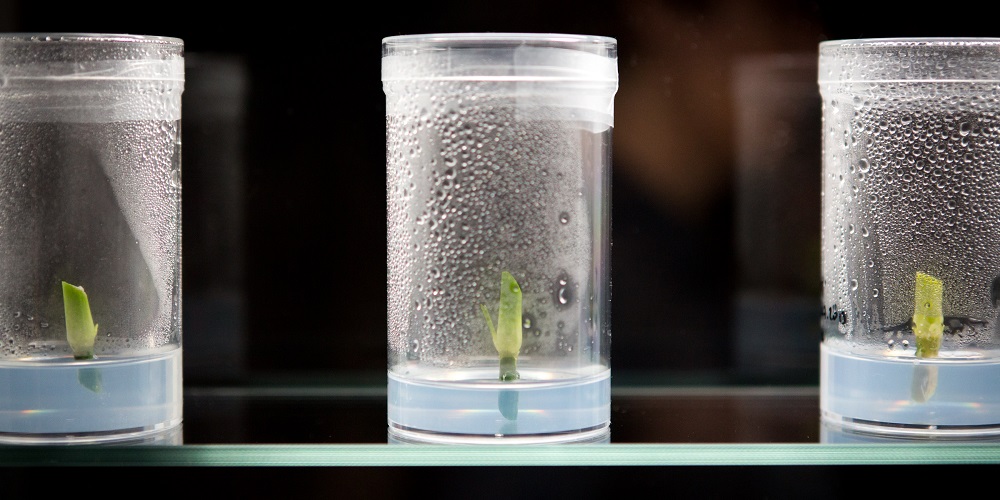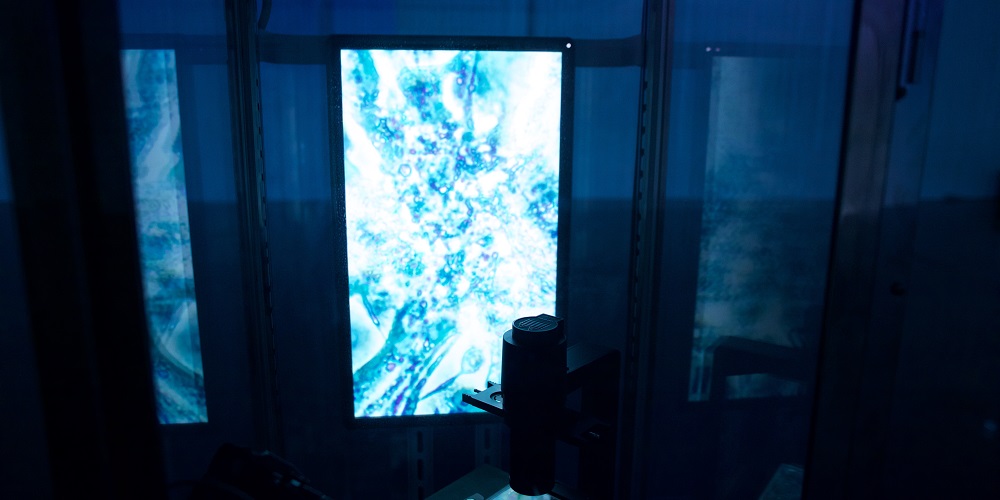
BCL
BCL is an artistic research framework founded by Georg Tremmel (AT) and Shiho Fukuhara (JP) in 2005 to explore the relations, congruences and differences of biological and cultural codes through artistic interventions and social research. Shiho received a BA hons in fine art from Central St Martins College of Art and Design in London and continued her studies with an MA in interaction design at the Royal College of Art. Georg studied visual media art (Visuelle Mediengestaltung) at the University of Applied Art in Vienna with Peter Weibel and Karel Dudesek and interaction design at the RCA.
Common Flowers / Flowers Common
The Common Flowers project is based on the first commercially available, genetically modified flower, the blue “Moondust” GM carnation developed and marketed by the Japanese brewers Suntory. But although Suntory applied for and was granted permission to grow this GM plant in its key markets, it has chosen not to. Instead the blue GM flowers are grown in Columbia, harvested, and shipped as cut flowers to the worldwide markets. With Common Flowers we reverse the plant-growing process, by growing, multiplying and technically “cloning” new plants from purchased cut flowers using plant tissue culture methods. The blue GM carnations are brought back to life using DIY biotech methods involving everyday kitchen utensils and easily purchasable and ready materials. And because the plants are officially considered “not harmful” and therefore legally permitted to be grown outside, we took the next logical step and released the blue GM carnation into the environment. This action is intended ask questions about the state of intellectual property, ownership and copyright issues surrounding the bio-hacking and bio-bending of plants. Our goal is to make these flowers available as shared Common Flowers and to create the free spaces where they can grow and prosper in a Flower Commons.

Credit: Martin Hieslmair
Ghost in the Cell
Ghost in the Cell is the actual, physical embodiment of the virtual idol Hatsune Miku. Hatsune Miku made her debut in the form of a voice synthesis computer program, from which user-generated images, songs, videos, concerts—and even operas—collectively emerged. She blurs the space between flesh and virtual idols, she represents a mass-mediated, semi-living entity, omnipresent in the Japanese media and social sphere. BCL took the next logical step of bringing her to life: creating an actual living, biological embodiment of her code-based life. First we created an artificial, synthetic genome, based on averaged female genomic data. It was possible to add, edit and insert genetically encoded information into the synthetic genome. Parts of the synthetic genome were introduced into iPS (induced pluripotent stem-) cells, which were differentiated into cardiomyocytes, resulting in the living, beating heart cells of Hatsune Miku. Hatsune Miku became the space where the symbolic and the real collide.
In collaboration with Yuki Yoshioka and Philipp Boeing.

Credits: Yohsuke Takahashi (21st Century Museum Kanazawa); Hideo Iwasaki (Waseda University, metaPhorest); SemiTransparent Design; Crypton Media

